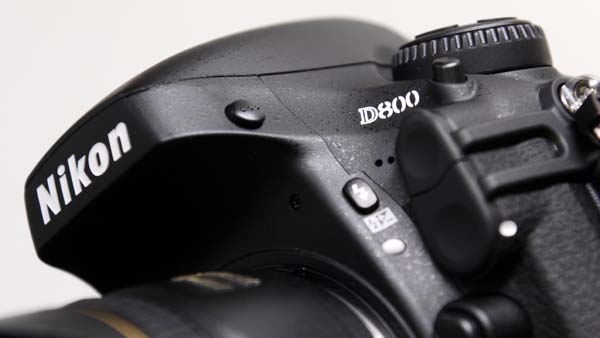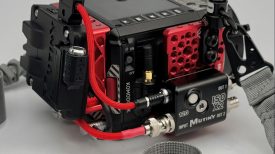By Dan Chung
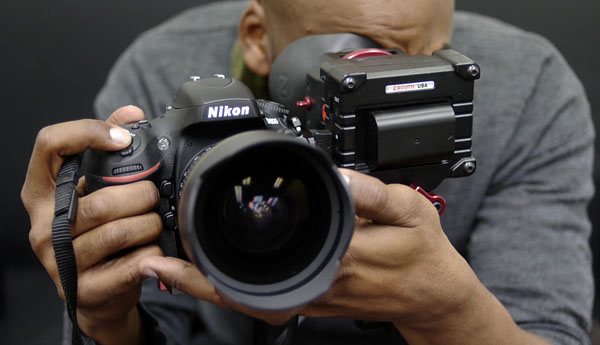
I went to Nikon yesterday with my photojournalist friend Keith Bedford to get hands on a pre-production D800 and in particular look at it’s video functionality. As with my previous look at the D4 I was unable to take away any recorded imagery but we were able to test the camera with a range of accessories to see how the camera would work when set up for video. Below are a few of my notes and observations. Much of the camera’s video side is similar to the D4 and because of this I am not going to go over them again in detail here (check out my previous report and Johnnie Behiri’s if you are unfamiliar with the D4).
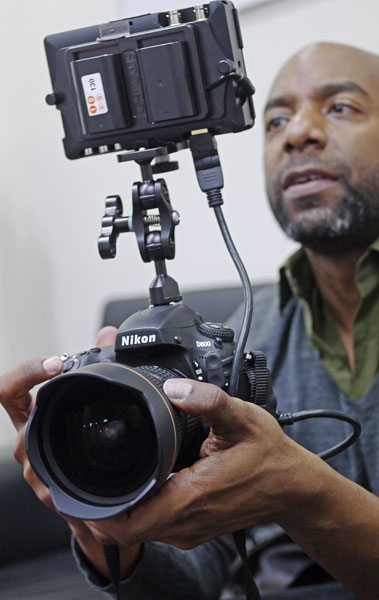
My first impression was that the camera body is very well built, similar to the D700 but with a more rounded appearance. The grip was very comfortable in my hands, Keith has much bigger hands than me but too commented how nice it was to hold.
The only D4 video feature I found missing from the D800 is the the 2.7x 1080P crop mode. The D800 only has full frame (FX) and 1.5x (DX) crop options. Technical considerations are cited as reason for this as the D800 CMOS chip is around twice the resolution of the D4 one. I did discover that on the D800 you can assign the Fn key on the front of the camera to change the crop which is quite quick to do, you cannot however adjust the crop whilst recording.
Audio is the same as the D4 with manual control in 20 steps and a headphone jack.
On the preproduction D800 and D4 cameras we also found it was impossible to change the audio level once recording. For news this probably means you will need to use an external mixer or mic with audio level control (some radio mics have this feature) if you want total control of the audio while the camera is recording.
We tried both the SmallHD DP6 and Zacuto EVF fed via HDMI from the D800 and they worked as they should without the need for firmware mods – good news. Looking at the image on the DP6 it seemed very clean and crisp, even at 1-1 pixel mode. Noise was well controlled.There was moire evident on the monitor though and I assume that Nikon are using line skipping techniques to generate the video output (the current Canon DSLRs suffer from similar moire). Remember that this was a pre-production camera and the final unit may be different. I could not make a fair assessment of sharpness and colour as we were in a poorly lit room with no broadcast monitor.
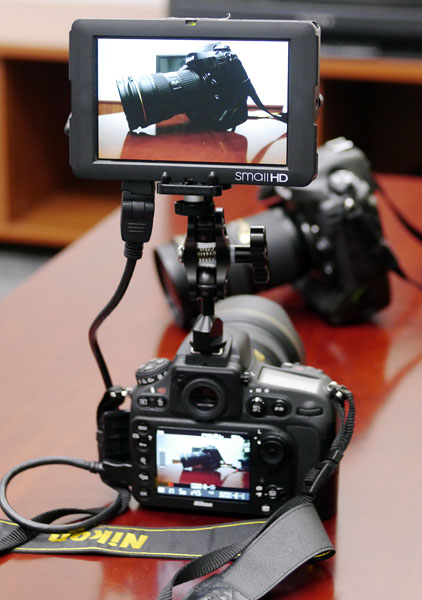
If you are recording the clean HDMI signal with an external recorder and no card in the camera then I was hoping you could use the expanded focus to check sharpness during shooting. Sadly the HDMI output of the image is also enlarged when you expand the image to check focus on the rear screen (unlike on video cameras like the Sony F3 or Canon C300). There may be a way around this but we couldn’t find it. Also the expanded focus magnification buttons are on the left of the LCD screen same as the D4 – this I found inconvenient to get to whilst shooting and I much prefer the Canon 5D mkII placement of this function on the right of the camera by your thumb.
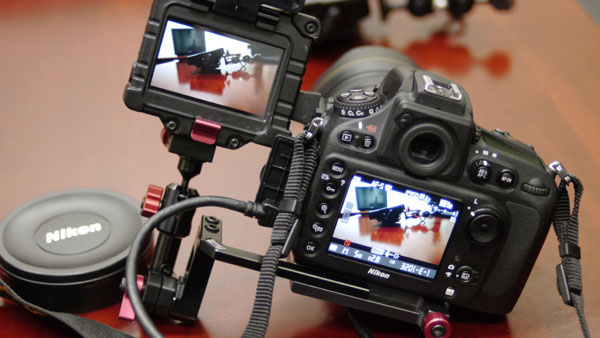
For some news shooters the clean HDMI is not just useful for recording video though – the past year has seen the rise in use by news organisations of live transmissions using low cost cellular products like the Teradek Bond. The clean HDMI feed from the D800 should work with devices like the Bond and would certainly be useful to news organisations looking to do more live coverage on a budget.
One other thing that we checked was how well the Zacuto Z-finder works with the D800. The screen is a little bigger than the previous models and I thought it might not cover. I held the Z-finder to the back of the camera and it seemed fine. One less thing to worry about if migrating from a previous DSLR.
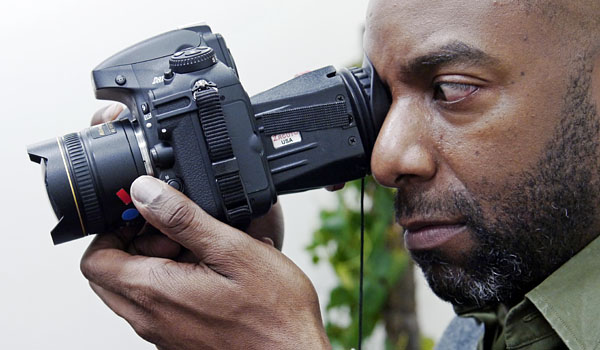
Autofocus is not something I recommend for DSLR video shooting, however we did try it on the D800 in video mode. It seems quite quick compared to my 5D mkII but not as fast as newer mirrorless cameras like the Sony NEX7. The focus seems to hunt a little back and forth a lot of the time before settling on the subject. The other thing that it does it open up the aperture to allow focus in certain situations, this is obviously undesirable while recording. I do think the AF seemed good enough to get focus before, but not during, recording.
One last thing that I got to see for the first time was the new XQD card for the D4. It seemed to be quite robust and it will be interesting to see if it takes off as a format. The D800 does not take the XQD card though, instead having SDXC and CF card slots.
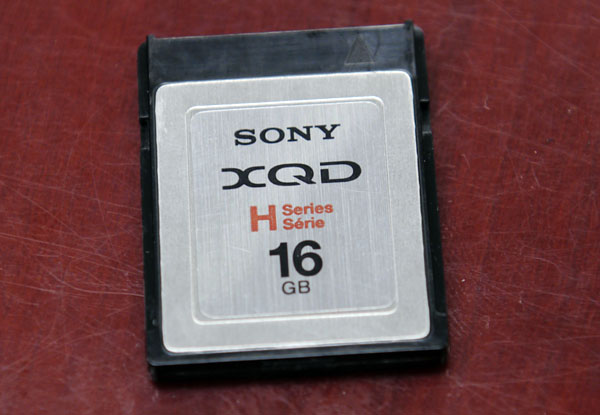
The D800 is certainly a step up in operability from other DSLRs, if you are a Nikon user already shooting video on a D7000 or D3s then it should be a very welcome upgrade (as long as the image quality is as expected). But with the rumour mill going nuts about the Canon 5D mkII’s possible replacement, I think it will be worth waiting to decide which way to jump if you are in the market for a new DSLR.

